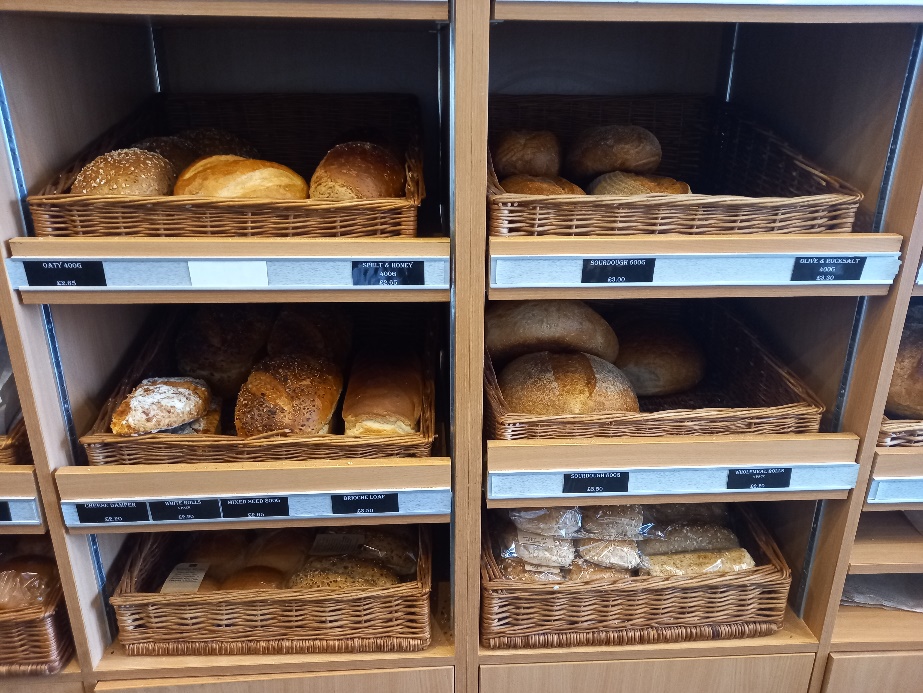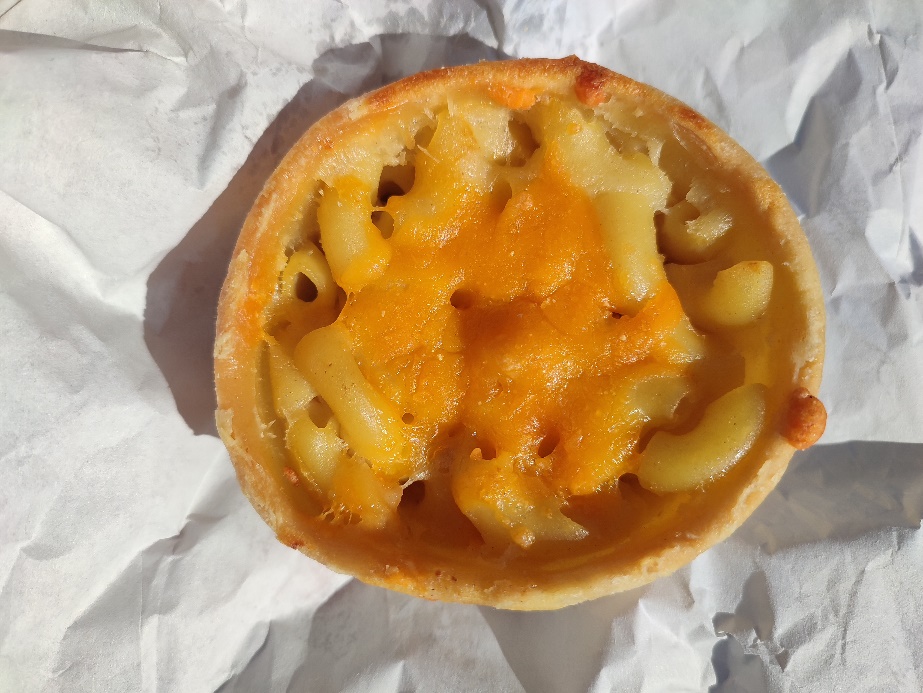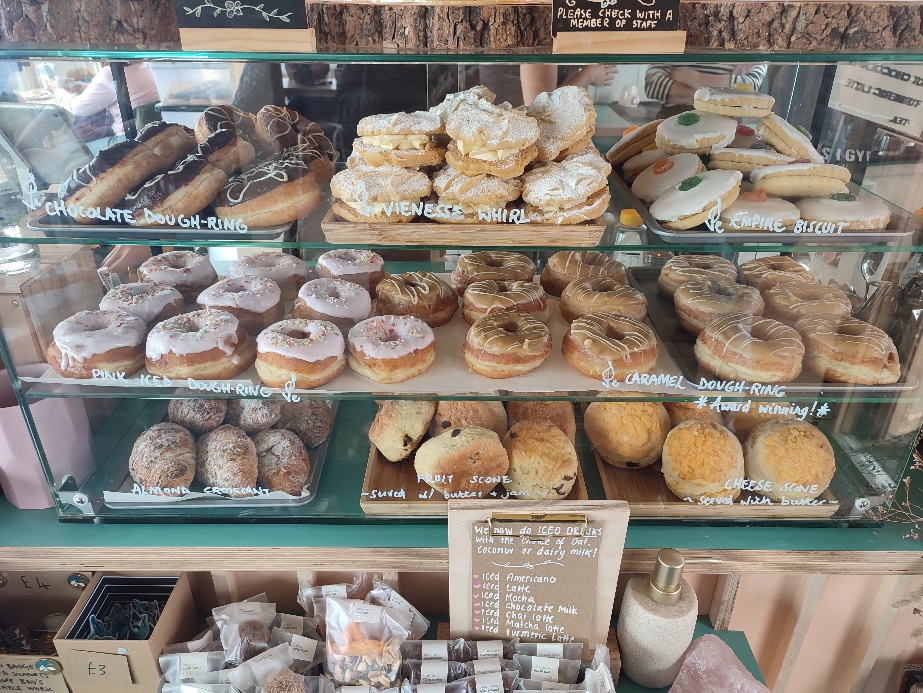Bread tourism
Abstract
The relationships between bread and tourism are scarcely developed in previous research in marine and island cultures. Based on interviews with six tourists to the city of Aberdeen, north-eastern Scotland (United Kingdom), this research note shows the motivations and experiences in relation to bread tourism. Results describe six bread tourists in relation to six baked products which are part of the culinary tradition of the region. The paper also discusses the theoretical and practical implications for bread-based food tourism management and marketing.
Keywords
bakery, culinary heritage, gastronomy, marine environments
1. Introduction and context
While marine and island cultures are often analysed based on their fishing heritage and traditions, other products remained underexplored in previous research. This is the case of bread making, which is relevant in marine and island cultures (see, for example, Kliewer, 2008; Norris, 2013). Bakeries are among the most representative examples of the culinary identity of places (Kowalczyk, 2020) and they contribute to the creation of food tourism experiences (Fusté-Forné and Filimon, 2021). Previous studies argued that the symbolism of food appears in products such as bread, as Bessière (1998) states, “some foodstuffs are the basis of fantasy and concentrate symbolic virtues” (p.23). In particular, Long (2022a) has focused on soda bread as an Ireland famous bread to explain the process from ‘everyday staple’ to ‘heritage food’ and to discuss how it also represents “distinctive political, economic, and cultural histories” (p.167) which are also transferred to bread as a souvenir (Long, 2022b). This connects with the tourist consumption of the product.
Previous research underlined the role of bread-baking traditions in rural tourism (Eglite and Kaufmane, 2019). Also, Birkić et al. (2020) have explored handmade bread as a gastronomic tourist product based on its presence in local restaurants. They stated that handmade bread can contribute to the preservation of intangible cultural-historical heritage and improve the competitiveness of destinations. However, they also alerted that the relationships between bread and tourism are under researched.
This paper adds texture to the conversations that have identified bakeries as a tourism attraction in island destinations (Norris, 2013) which show that bread is a manifestation of the strong relationships between food and culture in islands. This is illustrated in the following statement. “The way we prepare, consume, and talk about food says a lot about who we are, and distinguishes us from any other species on earth. Perhaps this is why, on the island of Gozo in Malta, the production of hobz tal-Malti, or Maltese bread, has become a symbol not only of sustenance, but identity” (Kliewer, 2008, p.211). This is also revealed in the meaning - is a sacred symbol of faithfulness in marriage - of the ‘crocodile’ bread Seserahan in Betawi marriage tradition, which can also be a source of tourism attraction (Hariyanto, 2022). Bread and baked products, as other foods do, shape marine and island heritage and traditions, and contribute to the development of sustainable relationships between production and consumption.
This research note builds on the understanding of the role of bread in marine and island cultures based on the relationships between bread and tourism in Scotland. While the traditional role of local bakeries as social fabrics in local communities in islands, they are also places to visit to taste local products. “Bakers that still make bread in traditional bakeries see themselves as protectors of a heritage that is being lost as the old ways of production fade” (Kliewer, 2008, p.211). How do visitors who buy at local businesses see a bread-based tourism experience? We argue that bread is a manifestation of tradition and bread making a manifestation of the way of life of local people that contributes to slow food tourism (Taş Gürsoy, 2021) in marine and island cultures.
2. Study method and case
This exploratory research aims to analyse the role of bread products in food tourism, thus of bread tourism, in the coastal city of Aberdeen, in the north-eastern Scottish region of Aberdeenshire, United Kingdom. While the primary role of Aberdeen maritime heritage in shaping local communities (Edwards, 2004), food production has recently taken part in food tourism conversations in the region (Wardle et al., 2023). This qualitative study is based on semi-structured interviews with international visitors to the city, and specifically with six tourists who buy at local bakeries. The interviews were built from previous research in the framework of ‘bread tourism’ as a niche form of ‘food tourism’. The goal of the interviews was to discuss the value of bread in the tourist consumption, and the motivation and experiences of visitors. The requisite to include a participant in the sample was that he/she consumed a different product than a previous participant in order to understand the role of different baked products. The interviews were performed in August 2023 and results of the analysis are explained in the next section with direct quotes from the interviewees that illustrate the six profiles of bread tourists.
3. Results and discussion
Results of the paper show the profiles of six food tourists who have explored a destination through its baked products. The products consumed by the six tourists are, in alphabetical order, bread, cake, macaroni pie, oat biscuit, pancake and scone. A general definition (based on the Cambridge Dictionary, 2023) of these products is provided at the beginning of each section. Each of these products have, therefore, its own unique characteristics and also reasons why people buy them. Results of the paper show the motivations and experiences in relation to each of them based on six food tourists.
Bread
Bread is a food made from a dough of flour and water, mixed together and baked. Bread is the central offering in bakeries in Aberdeen, including sourdough, whole wheat, oaty, and more types (see Figure 1), catering to different dietary needs and taste preferences. “I like to search local bakeries when I travel. When I find them, where locals purchase, I like to repeat. Artisanal products mean health”. In this sense, bread is also appreciated for its variety and versatility, and is used in sandwiches and toasts, and as a side in salads and soups. Artisan bread, and specially sourdough bread, is appreciated by the participant, as she likes to discover bakeries that use traditional methods and values bakeries with a commitment to handmade products.

Cake
Cake is a sweet food made with a mixture of flour, eggs, fat, and sugar, with a variety of savours. While cakes are often associated with celebrations and special occasions, the cake and coffee option for breakfast is recurrent in the city. There are numerous types of cakes, including berries and chocolate, but also apple or carrot which are traditional in other parts of the world. “Each region, each community, has its own cakes. Even if it is a brownie, every time is different, the local ingredients give food a unique taste”, states the participant, who also highlighted the food (cake) and drink (hot chocolate) pairing as a comfort meal in cold weather.
Macaroni pie
Macaroni pie is a casserole dish based on baked macaroni and cheese with a pastry crust (Figure 2). Macaroni pie is popular in Aberdeen bakeries. It can be consumed as a main course or a side dish. Also, macaroni pie can often be bought in advance and heated when you consume it. The interviewee highlighted that he was surprised to find a “dish of macaroni in the form of a pie”. While it is a Scottish classic baked product, it comes from the tradition of Italian pasta and it is also famous in Caribbean cuisine.

Oat biscuit
Oat biscuit is a small, flat cake that is dry and made of oatmeal. Oat biscuits, or oat cakes, are found in some bakeries and also in supermarkets in Aberdeen. They are considered by the participant as a healthy snack option because they are made of oatmeal, which can be suitable for people with certain dietary restrictions. The participant mentions that dining places use oat biscuits as a side, and she likes them “as a snack but also as a dessert with my coffee”.
Pancake
Pancake is a thin, flat, round cake made from a mixture of flour, milk, and egg, fried on both sides. Pancakes are a must-try food in most English-speaking countries. They also celebrate the Pancake Day, or Shrove Tuesday. While pancakes are often associated with brunches, they can be customized with various toppings like berries, butter, chocolate chips, and nuts, for example, which allows for a personalized experience. In the bakery, our participant found both plain and fruit pancakes. “I am staying at an apartment, and I get pancakes for breakfast. I feel an authentic Scottish breakfast”. The connection between the baked products and the Scottish identity is often mentioned by the tourists, who see this as a source of authenticity.
Scone
Scone is a small, round cake that is like bread, made from flour, milk, and a little fat, flavoured with cheese or fruit (see Figure 3). Scones are also versatile and can be enjoyed as a sweet or savory treat. The bakeries often sold them in three versions: plain, cheese and fruit. Scones are often eaten for breakfast or as a snack, but also as a side in afternoon tea. The simplicity of the product also makes people buy them at a regular basis. “I like the scone because it is a basic product with very few ingredients and I am sure I can eat it because there are some products I can not. It is also a typical product in Aberdeen and I also like to taste them all!”. As it also happens with other products (for example, macaroni pie) which are not usual in the countries of origin of the participants, people are interested in making classic recipes such as scones at home, which also allows experimentation with local ingredients.

4. Conclusion and further research
This research note analyses the relationships between food and tourism through the case of baked products in a coastal destination. Drawing from the understanding of bakeries as tourism attraction factors, the paper builds on the profiles of six bread tourists. The customer profiles identified in the previous section encapsulate the motivations and experiences of each bakery customer type, and illustrated examples of consumption experiences. However, we need to acknowledge that the reasons for buying these items can vary based on cultural influences, dietary needs, personal preferences, and the occasion at hand. Results of this paper are descriptive and exploratory, however they contribute to the valorisation of bread as a lesser studied food in marine and island cultures. Also, a series of research opportunities have emerged to explore baked products sold in other regions to understand the environmental, social and economic benefits of local food products, but also negative impacts (see Wardle et al., 2023), often neglected in previous attempts to analyse bread in tourism.
This paper has theoretical implications that expand the study of food tourism based on bread, and baked products, as an example of local identity, and the contribution of food to the protection and promotion of marine and island cultures. We argue that bread tourism involves visiting bakeries to explore the sense of place through baked products. This can lead to the planning and development of themed culinary events and tours that place bread at the centre of the tourist experience, where the tourist can also participate in the creation of the experience (for example, cooking). Also, the collaboration with other local businesses such as cheese shops can also engage visitors with bread tourism experiences.
The paper also offers practical implications. Both businesses and destinations can take advantage of the customer profiles to improve product and marketing development. While quantitative studies could supplement the results of this research note, and provide a generalization of the profiles with more detailed demographic and psychographic segmentation, this paper also represents a call to use bread tourism as a way to enhance visitor participation and increase visitor satisfaction, through personalized experiences that expand the portfolio of food destinations in marine and island cultures.
Conflict of interest
The author declares that there is no conflict of interest.
References
- Bessière, J. (1998). Local development and heritage: traditional food and cuisine as tourist attractions in rural areas. Sociologia ruralis, 38(1), 21-34.
- Birkić, D., Rujevčan, D., Kralj, E., & Blažić, M. (2020). Cultural-historical heritage of the Karlovac county-homemade bread as a gastronomic tourist product in restaurants in the Karlovac county. In 12th Croatian Congress of Cereal Technologists (pp.7-15). Josip Juraj Strossmayer University of Osijek.
- Edwards, J. (2004). Maritime Aberdeen. The History Press.
- Eglite, A., & Kaufmane, D. (2019). Bread-baking traditions incorporated in a rural tourism product in Latvia. In 3th International Conference on Food and Agricultural Economics (pp.154-161). Alanya Alaaddin Keykubat University.
- Fusté-Forné, F., & Filimon, N. (2021). Using social media to preserve consumers’ awareness on food identity in times of crisis: The case of bakeries. International Journal of Environmental Research and Public Health, 18(12), 6251.
- Hariyanto, O. I. (2022). Cultural tourism: The meaning and symbol of crocodile bread in Betawi traditional marriage. In H. Oktadiana, M. Rahmanita, R. Suprina and P. Junyang (Eds.), Current Issues in Tourism, Gastronomy, and Tourist Destination Research (pp.301-312). Routledge.
- Kliewer, G. (2008). Maltese bread: a changing symbol of the island's identity. Journal of Applied Anthropology, 211-218.
- Kowlaczyk, A. (2020). Dimensions of Gastronomy in Contemporary Cities. In Kowlaczyk, A. and Derek, M. (Eds.), Gastronomy and Urban Space. Changes and Challenges in Geographical Perspective (pp.91-120). Springer.
- Long, L. (2022a). The travels of soda bread: From everyday staple to heritage food. Dublin Gastronomy Symposium (pp.167-173). Technological University Dublin.
- Long, L. M. (2022b). Folkloristic perspectives on food as tourism souvenir: a reflection on stereotypes, meanings and messages in Irish soda bread. Research in Hospitality Management, 12(3), 209-214.
- Norris, C. (2013). A Japanese media pilgrimage to a Tasmanian bakery. Transformative Works and Cultures, 14, 1-16.
- Taş Gürsoy, İ. (2021) Slow food justice and tourism: tracing Karakılçık bread in Seferihisar, Turkey. Journal of Sustainable Tourism, 29(2-3), 467-487.
- Wardle, J., Sorathia, A., Smith, P., & Feliciano, D. (2023). Environmental, social and economic perceptions of local food production: a case study of Aberdeenshire farmers’ markets. Scottish Geographical Journal, 1-15.
